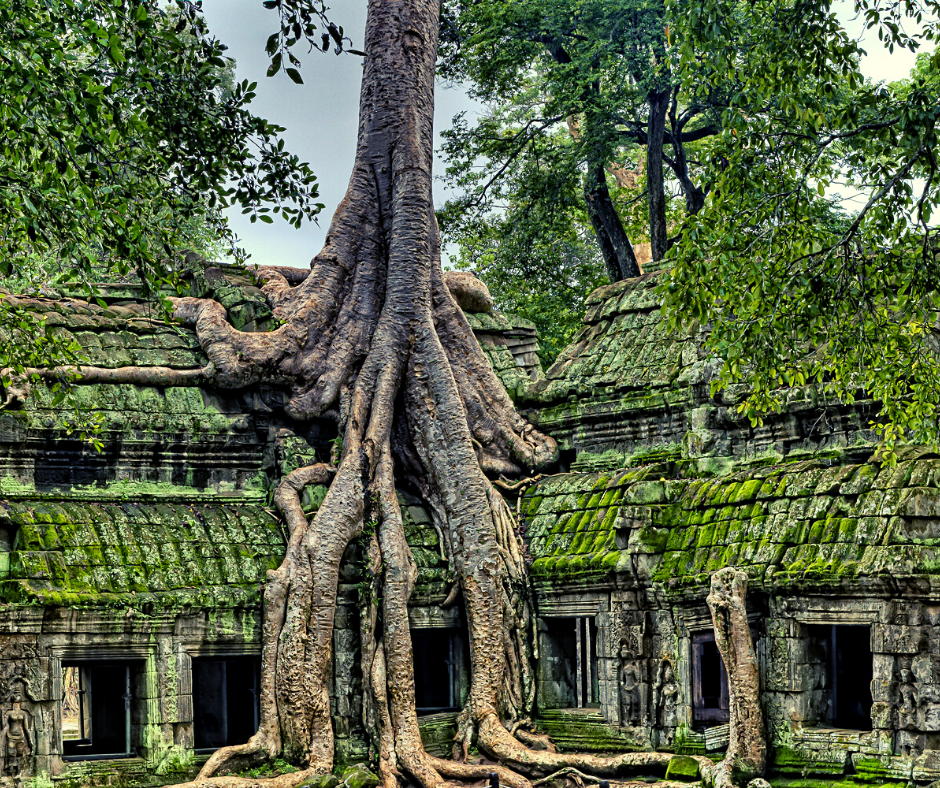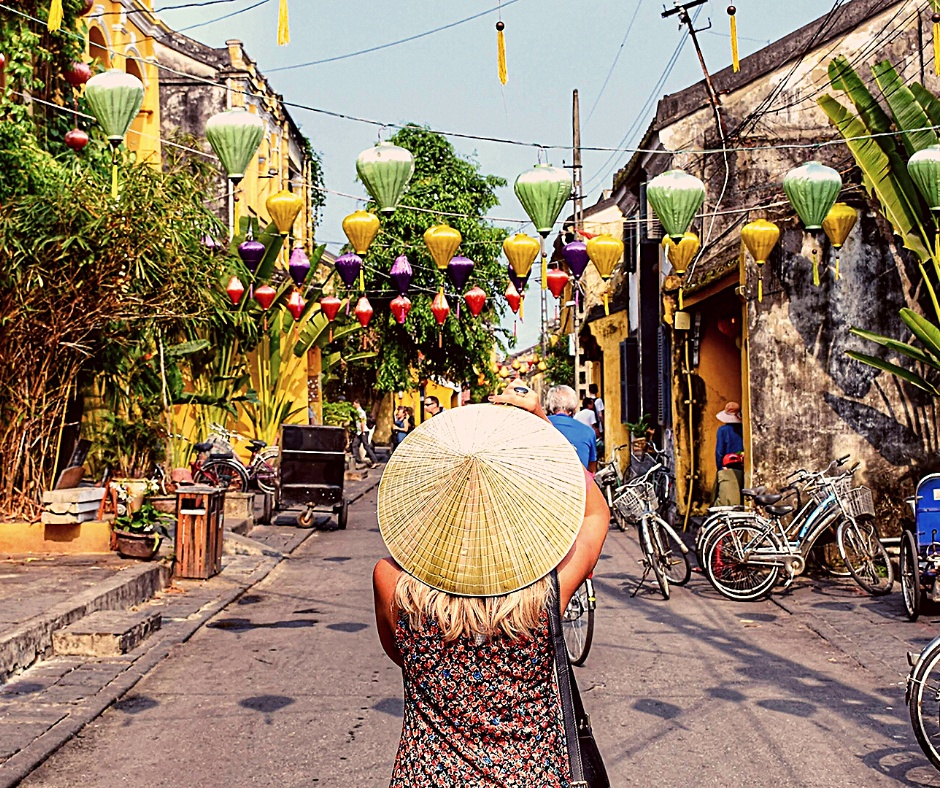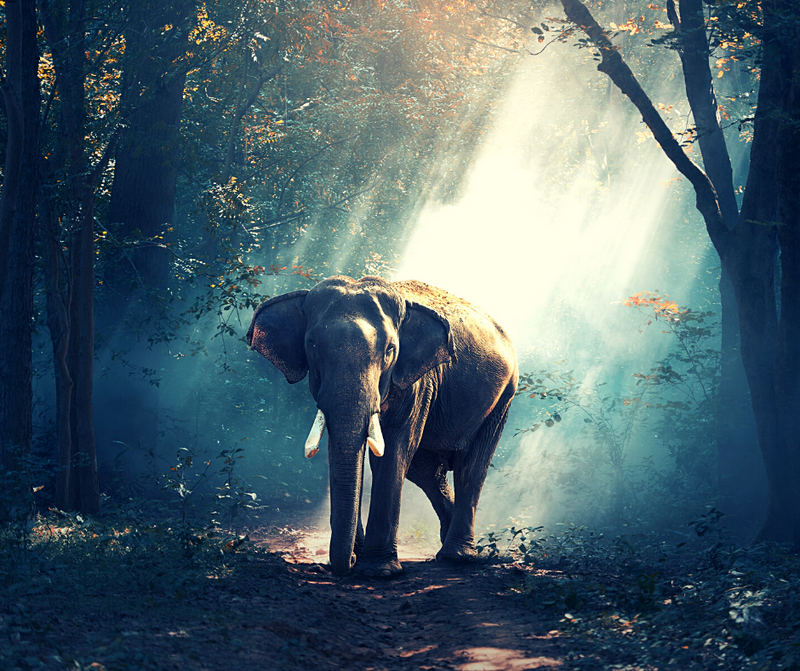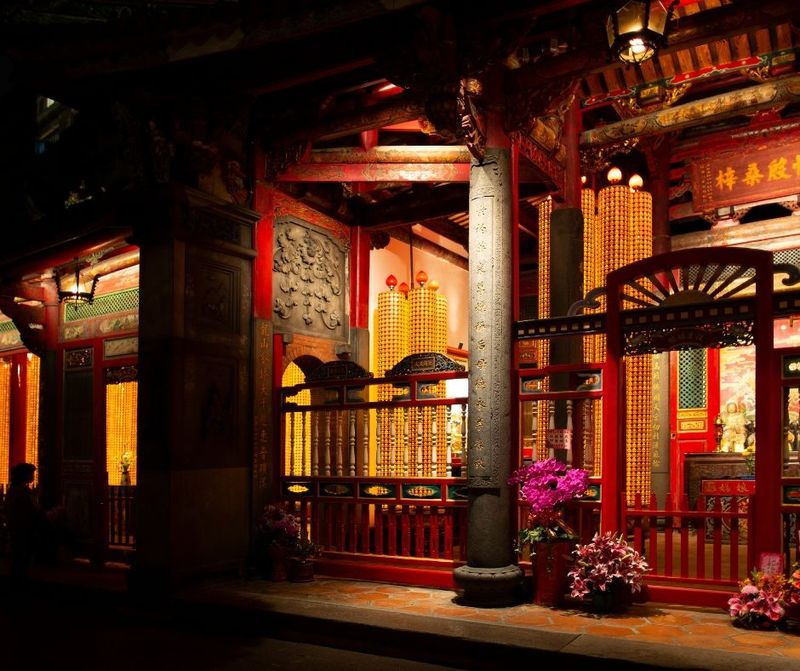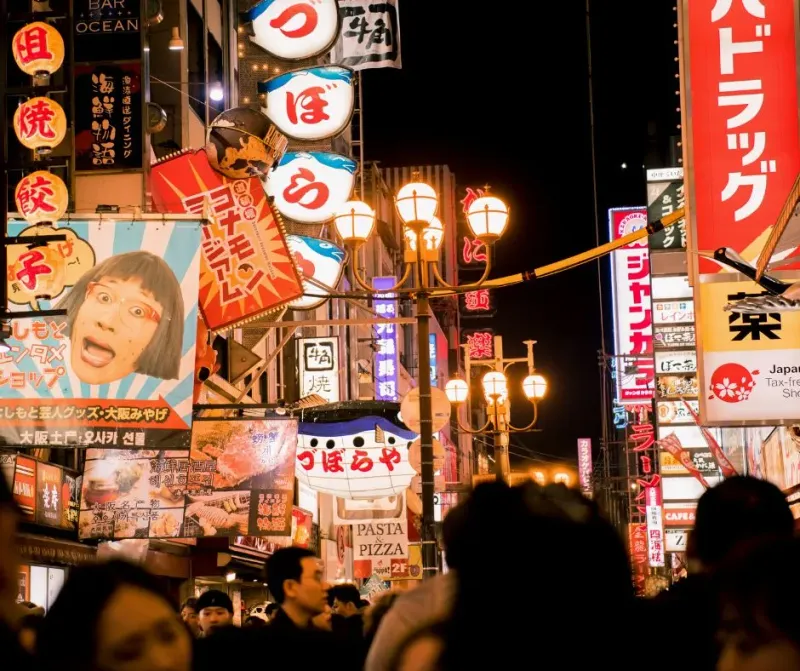[Last update: February 20, 2023] Sabai dii in Laos - the land of one million elephants! The country that often looks like the film location of Rudyard Kipling's Jungle Book is covered by thick forests and it is home to some of Asia's rarest species: The Indochine Tiger, the Asian Elephant, and the Asian Sun Bear.
🌱 Travel health insurance for Laos
🇱🇦 Entry requirements for Laos
- Valid visa: Apply for the visa before traveling. It takes around 3 business days to complete the process.
- Covid test: Proof of a negative COVID-test result prior to your travels. Negative PCR-covid test within 72 hours before boarding or entering the country.
- Vaccination: A valid EU Digital COVID certificate or a valid recovery certificate or an alternative proof of full vaccination. If you have been vaccinated in the USA, please show your CDC-card. The vaccine must be no less than 14 days prior to arrival.
- Travel health insurance: You need health insurance in order to match the entry requirements. The insurance policy must cover a minimum of $50,000 including Covid-treatments. Check out Genki's health insurance and tick this off your list.
✈️ How to get to Laos
- Plane: The landlocked country has 3 international airports which are connecting Laos with most other Asian countries. The capital's airport, Wattay International Airport (VTW) in Vientiane is only 3 km outside the city. A shuttle by taxi is around 6 Euro. Luang Prabang Airport (LPQ) is in close proximity to the city and well-connected to other domestic or international destinations.
- Cross-country: Depending on your route and transportation you can enter Laos by land. The country has direct borders to neighboring Thailand, Vietnam, Myanmar, Cambodia, and China. you can check all possible entry points here.
🚌 Public transport in Laos
Uber and Grab are not available in Laos.
- Public transport: There is no public transport in Laos that is worth trying. Cities have neither tram, metro, subway nor a reliable bus network. In cities or towns, it is easy and best to take a taxi or tuk-tuk.
- Taxi: Official taxis are widely available in Laos. However, recent reports by tourists include price scams and a lack of navigating the nearest route to the destination.
- Tuk Tuk: Similar to Bangkok's Tuk Tuks, Laos' Tuk Tuks are a nostalgic way to get around, for example within Vientiane or Luang Prabang.
- Bicycle: It is easy to rent a bicycle in Laos and many locals use bicycles to get around. Tourists often use bicycles to paddle through Luang Prabang and Vang Vieng although the heat and high level of humidity make it a workout. Cycling in Vientiane is not recommended due to the lack of bike lanes, and heavy and chaotic traffic.
- Scooter rental: Another way to be self-sufficient is by renting a scooter, which travelers often do. The rental process is uncomplicated. Please be aware that the traffic in Laos has basically no rules. Busses and trucks drive fast and don't mind racing through big puddles soaking pedestrians, cyclists, and bikers in dirty water. It's not advisable to take scooters overland. However, the hardcore biker will find his/her way.
🏡 How to find a place
- Airbnb: You can find rooms for 300 Euro a month and apartments for under 500 Euro, for example in Luang Prabang. Laos does not offer modern condominiums and apartment buildings (except in Vientiane). You mostly stay in hostels, or small hotels, or rent a private room with an ensuite bathroom from someone.
🏘 Where to stay in Vientiane
Laos is not very popular for digital nomads. However, there is a bigger expat scene in the capital of Vientiane, the economic, diplomatic, and political hotspot of Laos. I am not a big fan of Vientiane, mainly because of its wild and non-existent urban design, heavy traffic, and border-city charm. On the positive side, Vientiane offers the best infrastructure, featuring quality hotels, professional service, and international influences, which can be experienced in cafés, restaurants, shops, art galleries, and events. I stayed a couple of times at the Beau Rivage Hotel which is located on the river banks.
- Sikhottabong District: The area is very popular among expats and digital nomads alike. You find serviced and modern apartments and short-term options in close proximity to dazzling riverfront scenery.
- Sisattanak District: This is a quieter neighborhood in Vientiane. It is home to most embassies and consulates as well as international schools and kindergartens.
🧑🏻💻 Where to work from in Vientiane
- Cafe Nomad: As the name suggests, this café is great for digital nomads. They serve fresh paninis, salads, and juices. The atmosphere is quiet, the plugs are plenty, and the wifi is fast.
- Naked Espresso Misay: The café has many breakfast and lunch options on its menu. It is a good spot for a few hours of work sessions. Choose between inside and outside areas, rent a private meeting room if you want, or just chat with fellow café guests on the terrace.
🏘 Where to stay in Luang Prabang
- Center: The small town is nestled between the rivers Nong Khiau and Mekong and the center lies mainly on the peninsula. The center of Luang Prabang consists of a ring road (river promenades) and the main road in the middle where you can find the main sightseeing attractions such as temples, museums, art galleries, famous restaurants, bars, the post office, and the night market.
- Nam Khan Riverfront: The neighborhood around My Dream hotel is residential, peaceful, and quiet. A recommended place to stay is My Dream on the opposite side of the river but within walking and cycling distance to the center.
🧑🏻💻 Where to work from in Luang Prabang
- The Desk is Luang Prabang’s first dedicated coworking hub, pairing hot desks, dedicated desks, and private offices with the town’s fastest Wi-Fi (around 300 Mbps) in a bright, central space. Its laid-back community of freelancers and remote workers makes it the go-to spot when you need reliable connectivity and a professional vibe in Laos’ heritage capital.
- Two Little Birds Café: The family-owned café serves nutritious bowls and healthy meals. You find many seating options and working desks, as well as free wifi.
- Le Petit Prince Café: This is a cute breakfast place with many vegan and gluten-free options. The food is made with fresh and organic produce. The menu is a bit random from nutty granola to Korean kimchi. But all meals are handmade and serviced with love which you can taste. Wifi is free.
- Café Sinouk: Located in the historic part of the town, the café combines authentic Lao food with a great selection of coffee beverages. Wifi is free. You can choose to sit inside or outside on their patio.
🏘 Where to stay in Pakse
- Pakse: Located in the south of Laos, close to the Cambodian border, you find Pakse and the Bolaven Plateau with its tea and coffee plantations. When visiting Pakse (access via plane from Vientiane or Luang Prabang), choose to stay around the central market. Taxis and tuk-tuks are affordable. If you want to visit Tad Lo in the Bolaven Plateau or the Si Phan Don (4000 islands) area, book a private driver to take you around.
🧑🏻💻 Where to work from in Pakse
- Your accommodation: There is not really an amazing place to work from in Pakse. If you need stable wifi and quietness, stick to your accommodation. Otherwise, try the hotel lobbies and restaurants of the fancier hotels in town.
🚊 How to travel around
- Train: China invests heavily in Laos, mainly to in-depth the country so it can extract valuable natural resources. But that is another - sad - story. China built a railway that connects Vientiane with Luang Prabang (and China). If you want to travel southward to Thailand, there is a train that connects Vientiane with Bangkok.
- Bus: The domestic bus network is okay-ish. You can take minivans or bigger buses to travel across the country. Laos offers a relatively good bus network. You can take overland buses that connect Laos with Vietnam (Hanoi), Thailand (Bangkok), Cambodia, and China.
🎖Must see
- Bokeo Nature Reserve: The reserve was founded in 2004 to protect 12,300 hectares of lush rainforest and rare animal species, such as tigers, bears, elephants, birds, and monkeys. It is located on the Thai-Lao border north of Chiang Rai in Thailand. A part of Bokeo Nature Reserve is open for ecotourism and education about the rainforests and their diverse beauty. The only way to enter Bokeo Nature Reserve is through the operator, The Gibbon Experience, which has obtained governmental permission.
- Mekong cruise: From Luang Prabang, take a boat to the Pak Ou Caves, which are just north of Luang Prabang. Once you are already on the water, why not travel further to a campsite in the wild? A glamping experience is a stay at the Kamu Lodge or the Luang Say Lodge.
- Bolaven Plateau: North of Pakse, in the south of Laos, you find the Bolaven Plateau. If you are into hiking, coffee, and elephants, the Bolaven Plateau is for you. With its cooler climate, the mountain range is famous for its tea and coffee plantations. Hiking trails to waterfalls like the Tad Fane fall, wild elephants in Tad Lo village, and delicious coffee can be found in the Bolaven Plateau, which is - normally - accessible via Pakse airport which connects to Vientiane, Luang Prabang but also Siem Reap. From Pakse, you take the car to Tad Lo and stay in the Tad Lo Lodge. If you are lucky, a group of wild elephants passes by your hut.
- 4,000 islands: Although Laos is landlocked, the country has more than 4,000 islands. Si Phan Don describes an area in the south of the province Champasak, the land where Laos kisses Cambodia. The two countries are connected by the majestic Mekong river. In its pools, a number of 4,000 islands have shaped the landscape. Two famous islands which are inhabited are Don Det and Don Khon. A true backpacker's paradise. Suitable for nomads only when staying in better accommodation. I personally recommend staying at Sala Don Khone. If you are lucky, you can see the rare Ayeyarwaddy River Dolphins, also called Fishermen's Friends, in the border waters.
💡 Good to know
- Internet: The average broadband connection in Laos is an average of 28 Mbps download and 24 Mbps upload.
- Sim cards: TLine (former BeeLine) or Lao Telecom are good mobile internet providers.
- Sockets: Type A, B, C, E, and F.
- Safety: Laos is a fairly safe country to visit. Its Global Peace Index is 50, in the company of Indonesia (49) and Serbia (51).
- Climate: Tropical monsoon climate with a heavy rainy season between May and October. A hot dry season between November and April.
- Currency: Official currency of Laos is Lao Kip (LAK). 1 Euro equals 18,398 LAK.
- Vang Vieng: The least attractive town in Laos because of its popularity for Australian spring break travelers. Besides drunk teenagers and naked river tubers, you find natural beauty in Vang Vieng. Sand karst mountains, valleys, rice fields, and river landscapes make Vang Vieng one of Laos' most photographed destinations. Vang Vieng is between Vientiane and Luang Prabang. When taking the bus, make sure you get some travel medicine as the road winds through the steep mountain range.
- Wildlife: Laos is home to the rarest species on earth, such as the Asian Elephant and the Indochinese Tiger. But also the endangered Asian Sun Bear, the leopard cat, the marbled cat, langurs, and monkeys live in the lush jungles of Laos.
- Elephants: Once the land of the million elephants, experts from elephant conversation groups and the Lao government believe that there are only 800 elephants left in the country. Of those, around 400 are in captivity and 400 are wildlife. Both groups are not sustainable and the numbers are declining. The cause of the decline of wild elephants lies in notorious deforestation. From once 70% forest coverage, only 40% of the jungle is left. Body parts such as ivory and skin are used in Burmese and Chinese traditional medicine.
- Vietnam war: Did you know that Laos is the most bombed country in the world? Between 1964 and 1973, the USA dropped more than 2 million bombs across Laos during the Vietnam war and 30% of the bombs did not explode. This leads to the sad fact that a vast area of land is not feasible for agriculture. Still today, hundreds of locals get killed and injured every year due to new explosive discoveries. The affected areas are close to the Laos-Vietnam border and around Phonsavan.
🚧 What to avoid
- Elephant riding: Instead of Elephant riding, it is possible to visit Elephant conversation camps around Vientiane and Luang Prabang. These camps are established to save the species of the Asian Elephant from extinction.
- Nudity: Laos is a deeply Buddhist country and nudity, including sunbathing topless on the beach (on Don Det island) or at the hotel is an act of disrespect. You will not find a hotel with a pool next to a temple.
- Shoes: When you are invited to someone's private home or when you visit a temple or other religious site, make sure to take off your shoes.
- Affection: In respect of the local traditions, don't make out in public, touch inappropriately or kiss each other in public, and especially never in front of monks or in a temple, or on the temple's property.
- Arguing: Lao people are friendly smiling, welcoming, and mostly very relaxed and easy-going people. They do not wish to have an argument or disagreement, especially not in public or in front of other people.
- Monks: Never touch a monk.
- Children: Never touch a child's head.
🚴🏻♀️ How to stay healthy in Laos
Stay active
- Gym: You will find the best gyms in Vientiane and Luang Prabang. Local gyms often come without air-conditioning but with an affordable price tag. If you want to sweat in a fancy place, check out the 4- and 5-star hotels.
- Yoga: Just have a look on Facebook and you should find someone who offers yoga classes for very little money. Yoga studios can be found in Vientiane and Luang Prabang.
- Cycling: Laos is a cycling-friendly country, thanks to the fact, that many Lao people use to cycle, especially the elderly and people in the countryside. Not sure if I would cycle in Vientiane. But definitely in Luang Prabang, Pakse, Tad Lo, Don Det or Nong Khiau.
- Mountain biking: It might depend on the availability of bikes but if Grasshopper Adventures still exists when you travel to Laos, check them out as they are known as the best mountain bike provider. Mountainbiking is fun around Luang Prabang, Nong Khiau, Vang Vieng and Pakse. For the fit traveler, the Bolaven Plateau can be traveled by mountain bike as well.
- Hiking: Laos offers many short and long-distance hiking trails. Around Luang Prabang, you can find hikes to the Kuang Si waterfall or in the nearby jungle and villages. The Bolaven Plateau is Laos' most famous hiking destination as travelers love to chase waterfalls. If you are into glamping, check out the Kamu Lodge and Luang Say Lodge, north of Luang Prabang which are off the beaten track and surrounded by forest and rivers.
Health Risks
- Water Quality: You should not drink tap water in Laos.
- Air Quality: The air quality in Laos is moderate.

